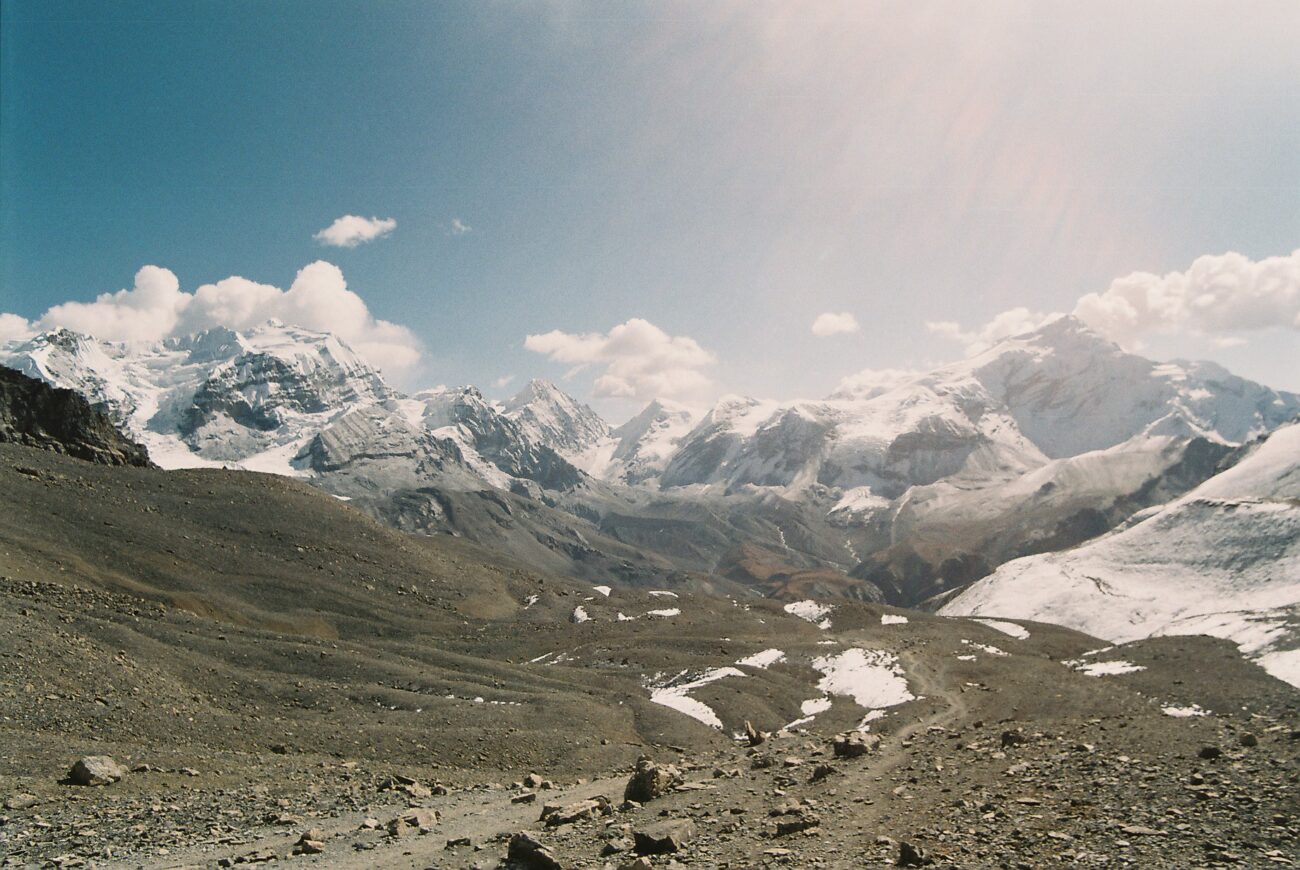PROTECT YOUR DNA WITH QUANTUM TECHNOLOGY
Orgo-Life the new way to the future Advertising by AdpathwayColorful chert, in varieties known as jasper, flint, agate, chalcedony, onyx, and others, is a is a hard, fine-grained sedimentary rock. Tiny quartz crystals, in a mineral form of silicon dioxide (microcrystalline or cryptocrystalline SiO2), compose these rocks; iron and other chemical elements provide the color. Used by indigenous people over millennia for stone tools such as arrowheads and spear points, plus for jewelry and other beautiful art objects, varieties of chert have always intrigued me.
So, the sight of a carpet of dark red jasper covering a river terrace in a remote corner of southern Utah was amazing. I had never seen anything like it. This jasper appeared during a recent rafting trip through Canyonlands National Park, when our group traveled through Sweetwater Canyon of the Green River, just above the confluence with the Colorado River. On one sunny morning, floating downriver, we began seeing ancient adobe and rock granaries (storage structures) constructed beneath protective overhangs in the steep cliffs above the river. This region also contains numerous petroglyphs and pictographs—the images that ancient people carved or painted onto rock.

Jasper on a river terrace near Turks Head above the Green River

Petroglyphs near Turks Head
With our boats moored so we could begin hiking, I climbed up onto a former river terrace and discovered the millions of red jasper fragments spread out across the flat terrace surface. This was a key to an important reason why ancient people had lived in the area: jasper is a valuable raw material for stone tools.
I became deeply curious about how such extensive chert beds formed and about the indigenous people who had occupied the area. Within hours of returning to the world of Wi-Fi, I was scrolling through research papers courtesy of Google Scholar. Fortunately, I found fascinating information about the region.
Jasper in the Cedar Mesa Sandstone

Jasper near Turks Head
The jasper I admired during the Utah raft trip is in the upper part of the Cedar Mesa Sandstone, a subunit of the Cutler Formation on the Colorado Plateau. This rock unit was deposited roughly 290 million years ago (Early Permian), primarily in eolian (wind-driven) dunes but also in streams and rivers. The climate was arid at that time, and the Ancestral Rocky Mountains to the northeast were shedding enormous volumes of sand and silt into the Canyonlands region. Ocean water lapped along a shallow coast far to the west.
Most cherts are found in marine sediments, where thick siliceous oozes develop from the fossilized tiny skeletal remains of diatoms (algae) and other plankton. Although seawater contains low amounts of silica, living creatures can efficiently extract the element and use it for their skeletons. Once the organisms die, they accumulate on the ocean bottom and become buried. Fossil remains of plankton and glass sponge spicules can be visible in chert, but generally one needs a microscope to see these. Cherts are typically found in association with limestone or submarine volcanic rock. Traces of iron produce red colors in oxidized form and greens in reduced form, with other chert colors ranging from white, gray and brown to black.
Now for a curious part: since the Cedar Mesa Sandstone is a terrestrial (i.e. continental, not marine) sedimentary unit, what was the source of the abundant silica required to form this extensive bed of jasper? Other geologists on our trip—far more knowledgeable than I am—speculated that the silica could have arrived from volcanic activity far to the west, associated with an oceanic plate colliding with the North American plate.
However, I found additional interesting information about the origin of chert while digging through literature. Some extremely old (Precambrian) cherts may have been deposited nonbiologically in oceans that were more saturated in silica than modern oceans, possibly because of either intense volcanic activity or the lack of organisms that use silica in their skeletons. Also, some chert that appears to be devoid of fossils can form from silica-rich fluids that migrated to nearby rocks after the fossils completely dissolved in the fluid.
Most interesting though, are research findings that eolian quartz—windblown sand—can be the source of silica for chert beds, especially in arid environments. Remarkably, one paper I found specifically described the Cedar Mesa Sandstone in southern Utah:
Red chert commonly overlies facies interpreted as inner dune sabkhas or ponds … and both underlie and overlie the red dune facies of the Cedar Mesa Formation (sandstone), Utah…. Chert also occurs within a facies I interpreted as a sand sheet…. The occurrence of chert in this continental setting provides compelling field evidence that dust was the source of silica for CPM [Paleozoic chert parent material] rather than upwelling, volcanics, or diagenesis of marine organisms. Dust apparently collected through adhesion to moist silty mud surfaces or was deposited in very shallow saline interdune ponds, as well as the sand sheet facies. (Cecil, 2015, p. 9)
For me, this convincingly explains the origin of the vast jasper beds that I admired! Nice!

Ancient storage structure in a cliff above the Green River
A Bountiful Environment

Ancient storage structure in a cliff (left side of photo)
I also wanted to learn if archaeologists had investigated the Green River region containing the beautiful red jasper—and once again I hit a bonanza! In 1975, survey teams from the University of Utah had undertaken archaeological surveys within a rugged landscape covering an area of about 325 square miles (840 sq km) in portions of the Maze District of Canyonlands National Park (map below)—specifically in the area where our rafting group traveled. From this survey, 248 sites were located and recorded, demonstrating the extensive use of the region by indigenous people.
From the artifacts found, including rock art, architecture, and small collections of ceramics at some sites, the researchers postulate discontinuous use from circa 6800 BCE to 500 CE (Archaic/Basketmaker II) and then from roughly 900 to 1300 CE (Pueblo II and III). People of the Fremont culture were in the area likely between about 700 to 1200 CE. Occupation and use of the region was apparently terminated by 1300 CE.
In the archaeological survey, researchers grouped sites into storage structures, habitation sites, rock shelters, open camps, chipping stations, and pictograph/petroglyph panels. Information from these sites suggests people occupied the area intermittently over thousands of years to procure valuable rock material, harvest wild grasses, and hunt desert bighorn sheep, mule deer, and smaller animals. They practiced agriculture along the banks of the Green and Colorado rivers, where rich soil and water are available. As no large or long-occupied base camps were found, the region appears to have been used for seasonal gatherings.
Chipped stone was recorded at 193 sites, including 76 classified as chipping stations based on the presence of finished stone tools, the rock cores and blanks prepared to construct the tools, hammerstones and waste flakes. Rock art was recorded at 42 sites, recording three major styles: Ancestral Puebloan, Fremont, and Barrier Canyon.
A description of Barrier Canyon art especially captivated me. The researchers report: “The panel consisted of lifesize human figures with varied torso decoration and halo-like headdresses. At the feet of eight of the figures were small upright animals, while a rainbow arched over others. The panel is reminiscent of the “Great Gallery” panel in Horseshoe Canyon….” (Hogan et al., 1975, p. 89). In the past couple of decades, I hiked to the Horseshoe Canyon pictographs on two different occasions—the figures are extraordinary, and possibly thousands of years old. It is a remarkable place. (I wrote about the Horseshoe Canyon rock art, and include photos, in my blog post, here: Mysterious Rock Art – Barrier Canyon Style. )

Area of the Maze Survey by the University of Utah (Fig. 1 in Hogan et al., 1975). The abundant jasper and some of the petroglyphs we saw were near a plateau called Turks Head—the tight curve in the Green River just north of the “G” in the label. Our river trip continued past the confluence with the Colorado River into Cataract Canyon.
A Valuable Resource
When chert is struck with sufficient force, conchoidal fractures with smooth, curved surfaces result, making this a valuable raw material for stone tools (similar to obsidian). In a process known as knapping, sharp flakes of the rock can be shaped into a variety of cutting tools. The time record for this use extends back to our hominin ancestors around three million years ago (the Paleolithic, or Stone Age, from the ancient Greek words plaios/old and lithos/stone). Chert and other hard, fine-grained rocks are extremely durable, so they can be useful in archaeological investigations. (See my post Turning Back Time – Stone Tools.)

Cherry Creek jasper, China (Wikimedia)
Flint is the term generally used for dark gray to black chert, with organic matter the source of the color. It is an effective tool for starting fires, as sparks result when chert is struck against an iron-bearing surface. (Hominins used fire as early as 300,000 to 1.5 million years ago, and possibly even earlier by Homo habilis or Australopithecines.) When guns were first developed, known as flintlocks, a fragment of chert striking a metal plate would create a spark to discharge the firearm by igniting a reservoir with black powder.
The beautiful colors of various chert varieties have inspired artists to shape art objects for millennia. Jasper was an especially favorite gem in the ancient world, and the name can be traced back in Persian, Hebrew, Assyrian, Greek, Latin and Arabic.
River Canyon Magic
Magical moments can happen on river trips in deep canyons. During the days, we could glide silently along the smooth current, watching the stories revealed by the rocks unfold and puffy clouds gather and then disburse in a deep blue sky. One night we watched moonlight gradually illuminating the canyon walls across the river from our camp. As the moon rose, like a curtain being pulled, the light drifted down the cliffs and shimmered and sparkled while crossing the river. Finally, a beautiful white glow enveloped the entire canyon. Watching the moon and constellations move slowly across the sky, I pondered the long history and many mysteries contained by the canyon, and I felt immense gratitude for the opportunity to travel in such a magnificent region.
If you liked this post, please share it and/or leave a comment or question below and I will reply – thanks! And if you’d like to receive a message when I publish a new post, scroll down to the bottom of this page, and leave your email address on my website. Join now to learn more about geology, geography, culture, and history.























 English (US) ·
English (US) ·  French (CA) ·
French (CA) ·